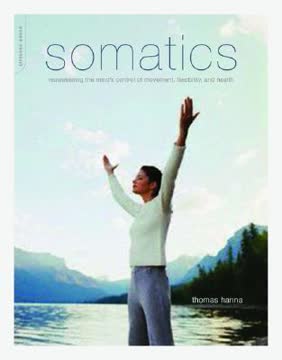Key Takeaways
1. Sensory-Motor Amnesia: The Root of Age-Related Physical Decline
"Sensory-motor amnesia (SMA) is a memory loss of how certain muscle groups feel and how to control them."
Unconscious muscle tension. Sensory-Motor Amnesia (SMA) is the primary cause of many physical limitations traditionally attributed to aging. It occurs when the brain loses conscious control over certain muscle groups, leading to chronic, involuntary contraction.
Reversible condition. Unlike structural degeneration, SMA is a functional problem that can be addressed through targeted exercises and awareness. This insight challenges the conventional belief that physical decline is an inevitable part of aging.
Stress and trauma. SMA often develops as a response to long-term stress or traumatic events. The brain adapts to these experiences by maintaining certain muscle groups in a state of constant contraction, eventually forgetting how to relax them voluntarily.
2. The Red Light Reflex: Understanding the Withdrawal Response
"The Red Light reflex is a response to distressful events. It is a protective response to negative events that threaten us, from vague apprehensions to gnawing anxieties, to overt dangers."
Protective mechanism. The Red Light Reflex is a primitive survival response that causes the body to contract and withdraw. It's triggered by stress, fear, and anxiety, leading to a characteristic hunched posture.
Physical manifestations:
- Tightening of abdominal muscles
- Shallow breathing
- Rounded shoulders
- Forward head position
- Compressed chest
Long-term effects. When this reflex becomes habitual due to chronic stress, it can lead to various health issues, including:
- Chronic pain
- Digestive problems
- Respiratory issues
- Cardiovascular strain
3. The Green Light Reflex: Recognizing the Action Response
"The Green Light reflex is assertive; its function is action, and it too is adaptational. One makes us stop, the other makes us go."
Action-oriented response. The Green Light Reflex is the opposite of the Red Light Reflex. It prepares the body for action and is associated with motivation and goal-directed behavior.
Physical characteristics:
- Arched lower back
- Contracted back muscles
- Lifted chest
- Extended neck
Potential issues. While necessary for action, when this reflex becomes chronic, it can lead to:
- Lower back pain
- Compression of spinal discs
- Fatigue due to constant muscle tension
Balance is key. Both the Red Light and Green Light reflexes are essential for survival and daily functioning. The problem arises when they become habitual and unconscious, leading to chronic muscle tension and pain.
4. The Trauma Reflex: How Injuries Affect Body Alignment
"The trauma reflex is a reaction of the sensory-motor system meant to guard against pain."
Protective adaptation. The Trauma Reflex is the body's way of guarding against pain and further injury. It often results in a tilted or asymmetrical posture as the body tries to avoid putting weight or stress on the injured area.
Long-lasting effects. Even after an injury has healed, the trauma reflex can persist, leading to:
- Chronic muscle imbalances
- Altered gait patterns
- Compensatory pain in other parts of the body
Recognition is crucial. Identifying the trauma reflex is the first step in addressing its effects. It often manifests as a noticeable tilt or favoring of one side of the body, which can be observed in standing posture or walking patterns.
5. Somatic Exercises: Reawakening Mind-Body Connection
"Somatic Exercises change your muscular system by changing your central nervous system."
Brain-focused approach. Somatic Exercises are designed to re-educate the brain's control over muscles, rather than simply stretching or strengthening them. This approach targets the root cause of SMA.
Key principles:
- Slow, gentle movements
- Focus on internal sensations
- Awareness of muscle contraction and relaxation
- Progressive learning from simple to complex movements
Benefits:
- Increased body awareness
- Improved muscle control
- Reduced chronic pain
- Enhanced flexibility and range of motion
- Better posture and balance
6. The Myth of Aging: Challenging Traditional Views on Physical Decline
"Age has never harmed anyone, nor has it ever killed a single human being. It is what happens during the aging process that harms and kills human beings."
Redefining aging. The book challenges the conventional belief that physical decline is an inevitable part of aging. Instead, it posits that many age-related issues are the result of accumulated stress, trauma, and learned patterns of movement and posture.
Potential for improvement. Contrary to popular belief, the human body has the capacity to maintain and even improve its function well into later years. This potential is often limited by SMA rather than actual physical deterioration.
Shifting perspective. By understanding that many age-related physical issues are functional rather than structural, we open up possibilities for improvement at any age. This shift in perspective can lead to more proactive and effective approaches to maintaining physical health throughout life.
7. Expectation and Mental Attitude: Their Role in Physical Well-being
"Expectation is what carries us from the present into the future. As such, it is like the prow of a vessel nosing its way forward."
Self-fulfilling prophecy. Our expectations about aging and physical decline can significantly influence our actual experience. Negative expectations can lead to behaviors and attitudes that reinforce physical limitations.
The power of belief:
- Positive expectations can motivate healthier behaviors
- Belief in the possibility of improvement can enhance the effectiveness of exercises and therapies
- A growth mindset can lead to continued learning and adaptation, even in later years
Changing the narrative. By challenging societal myths about aging and adopting a more positive, growth-oriented perspective, individuals can tap into greater potential for physical well-being and functionality as they age.
8. The Power of Awareness: Regaining Control of Your Body
"To view a human only as a third-person, externalized body is to see only a physical puppet or dummy that can be changed by the external methods of chemical and surgical engineering."
Internal perspective. The book emphasizes the importance of developing internal awareness of one's body, as opposed to relying solely on external observations or diagnoses.
Key aspects of somatic awareness:
- Attention to subtle sensations of muscle tension and relaxation
- Recognition of habitual movement patterns
- Conscious control over previously automatic responses
Empowerment through awareness. By developing greater somatic awareness, individuals can:
- Identify and address areas of tension or discomfort
- Make more informed choices about movement and posture
- Take a more active role in their physical health and well-being
9. The Daily "Cat Stretch": Maintaining Somatic Health
"Doing your Daily 'Cat Stretch' for five minutes each day upon awakening is sufficient to reinforce what your brain has learned so that you will never suffer sensory-motor amnesia."
Consistent practice. The Daily "Cat Stretch" is a brief routine designed to maintain the benefits gained from more extensive Somatic Exercises. It serves as a daily reminder to the brain of proper muscle control and body awareness.
Key components:
- Gentle movements targeting major muscle groups
- Focus on internal sensations and control
- Progressive patterns that engage the entire body
Benefits of regular practice:
- Maintains flexibility and range of motion
- Reinforces proper muscle control
- Helps prevent the re-emergence of SMA
- Provides a daily check-in with one's body
- Sets a positive tone for physical well-being throughout the day
Last updated:
FAQ
1. What is "Somatics: Reawakening The Mind's Control Of Movement, Flexibility, And Health" by Thomas Hanna about?
- Core Premise: The book explores how much of the physical decline associated with aging—such as stiffness, pain, and loss of flexibility—is not inevitable, but rather the result of learned, unconscious muscular habits.
- Somatic Education: Hanna introduces the concept of "somatics," a field focused on sensory-motor awareness and re-education to restore voluntary control over muscles.
- Practical Program: The book provides a series of somatic exercises designed to help readers regain control over their bodies, reduce pain, and improve movement.
- Myth of Aging: Hanna challenges the traditional belief that aging necessarily leads to physical deterioration, arguing that many symptoms attributed to aging are actually reversible.
2. Why should I read "Somatics" by Thomas Hanna?
- Empowerment Over Aging: The book offers a hopeful, science-based alternative to the myth that aging must mean decline, showing readers how to maintain or even improve physical function as they age.
- Practical Tools: Readers gain access to a set of easy-to-follow exercises that can be incorporated into daily life to reduce pain and increase flexibility.
- Holistic Perspective: Hanna bridges the gap between mind and body, emphasizing the importance of self-awareness and self-responsibility in health.
- Broad Appeal: The book is accessible to both laypeople and health professionals, making it valuable for anyone interested in movement, health, or aging.
3. What are the key takeaways from "Somatics" by Thomas Hanna?
- Sensory-Motor Amnesia (SMA): Many chronic pains and movement limitations are due to SMA, a loss of voluntary control over certain muscle groups, not structural damage or inevitable aging.
- Reversibility: SMA and its effects can be unlearned and reversed at any age through somatic education and specific exercises.
- Three Reflexes: The Red Light, Green Light, and Trauma reflexes are key patterns of muscular response to stress and injury, and understanding them is crucial for regaining control.
- Self-Responsibility: True health improvement comes from internal education and awareness, not just external medical interventions.
4. How does Thomas Hanna define "somatics" in "Somatics"?
- First-Person Experience: "Somatics" refers to the first-person, internal experience of the body, as opposed to the third-person, external view of the "body" as an object.
- Living Body Concept: The term "soma" is used to describe the living, self-sensing, self-moving aspect of a person, emphasizing subjective awareness.
- Somatic vs. Bodily Problems: Hanna distinguishes between somatic (functional, internal, and reversible) and bodily (structural, external, and often treated with surgery or drugs) problems.
- Importance of Awareness: Somatic education is about increasing awareness and voluntary control over bodily functions, leading to improved health and movement.
5. What is "sensory-motor amnesia" (SMA) according to "Somatics" by Thomas Hanna?
- Definition: SMA is a condition where the brain loses voluntary control and awareness of certain muscle groups due to habituated, unconscious contraction patterns.
- Causes: It can result from stress, trauma, injury, or simply the gradual adaptation to modern life and aging.
- Symptoms: People with SMA experience chronic pain, stiffness, limited movement, and distorted posture, often misattributed to aging or structural problems.
- Reversibility: SMA is not permanent; it can be unlearned through somatic exercises that retrain the brain to sense and control the affected muscles.
6. What are the Red Light, Green Light, and Trauma reflexes in "Somatics" by Thomas Hanna?
- Red Light Reflex: Also called the withdrawal response, it involves contraction of the front body muscles in reaction to stress or fear, leading to stooped posture and shallow breathing.
- Green Light Reflex: Known as the action response, it involves contraction of the back muscles in response to the need for action or responsibility, often resulting in swayback and lower back pain.
- Trauma Reflex: Triggered by injury or trauma, it causes one-sided muscular contraction, leading to tilting, limping, or scoliosis.
- Role in SMA: These reflexes, when habituated, are the primary sources of sensory-motor amnesia and the resulting physical symptoms.
7. How does "Somatics" by Thomas Hanna challenge the myth of aging?
- Not Inevitable Decline: Hanna argues that most physical decline attributed to aging is actually due to learned muscular habits and SMA, not unavoidable biological deterioration.
- Evidence from Case Studies: The book presents multiple case histories where individuals of various ages reversed chronic pain and regained function through somatic education.
- Scientific Support: Hanna references research showing that physical activity and sensory-motor awareness can maintain or improve function well into old age.
- Positive Expectation: The book emphasizes the power of expectation and self-image in shaping physical outcomes as we age.
8. What is the somatic exercise program in "Somatics" by Thomas Hanna, and how does it work?
- Eight Core Lessons: The program consists of eight progressive movement lessons targeting the back, stomach, waist, trunk rotation, hips, neck, breathing, and walking.
- Focus on Awareness: Exercises are performed slowly and mindfully, with attention to internal sensations, to retrain the brain’s control over muscles.
- Daily "Cat Stretch": A short, daily maintenance routine is recommended to reinforce new patterns and prevent SMA from returning.
- Self-Education: The exercises are designed to be self-taught, empowering individuals to take charge of their own physical health.
9. What practical advice does Thomas Hanna give for getting the most out of the somatic exercises in "Somatics"?
- Move Slowly and Gently: Slow, gentle movements allow the brain to notice and relearn control over muscles.
- Focus on Sensation: Pay close attention to internal sensations during each exercise, rather than external appearance or force.
- Avoid Forcing Movements: Forcing or straining can reinforce SMA; instead, use minimal effort and never push into pain.
- Consistency and Patience: Regular, patient practice is key to lasting change, and progress should be measured by increased comfort and control, not speed or strength.
10. What are some of the most important case studies or stories in "Somatics" by Thomas Hanna, and what do they illustrate?
- Barney (42): Chronic hip pain and imbalance resolved by retraining muscle control after an old injury, illustrating the reversibility of SMA.
- James (32): Severe lower back pain and "disk degeneration" reversed through somatic exercises, showing that structural diagnoses can mask functional problems.
- Louise (56): "Frozen shoulder" after surgery healed by regaining voluntary control, not through further medical intervention.
- Harley (60) and Alexander (81): Both overcame long-standing postural and movement issues, demonstrating that age is not a barrier to improvement.
- Lesson: These stories collectively show that functional, not structural, issues are often at the root of chronic pain and can be addressed through somatic education.
11. What are the best quotes from "Somatics" by Thomas Hanna and what do they mean?
- "Function maintains structure." – Emphasizes that regular use and control of the body’s functions preserve its health and form.
- "Sensory-motor amnesia is a pathology that is neither medical nor surgical, and it cannot be diagnosed or treated within these traditions." – Highlights the need for a new approach (somatic education) beyond conventional medicine.
- "As we grow older, our bodies—and our lives—should continue to improve, right up until the very end." – Challenges the myth of inevitable decline with age.
- "The human species, possessed with a brain whose genius is unlimited learning and adaptation, is a species that is genetically designed to age by growing." – Suggests that growth and improvement are possible throughout life.
12. What are the broader implications of "Somatics" by Thomas Hanna for health, education, and society?
- Redefining Health: The book proposes a shift from passive, treatment-based health care to active, self-educational approaches that empower individuals.
- Educational Reform: Hanna suggests that early training in sensory awareness and motor control could dramatically reduce public health problems.
- Mind-Body Integration: The somatic viewpoint bridges the gap between subjective experience and objective science, advocating for a more holistic understanding of human beings.
- Aging and Society: By dispelling the myth of aging, the book envisions a society where older adults remain active, capable, and valued for their experience and wisdom.
Review Summary
Somatics by Thomas Hanna receives high praise for its revolutionary approach to body awareness and pain relief. Readers appreciate Hanna's insights on overcoming age-related physical limitations through simple exercises. Many report significant improvements in flexibility, posture, and chronic pain. The book is lauded for its accessibility, though some find the exercise illustrations unclear. Critics note repetitive content and extreme claims. Overall, reviewers consider it a life-changing read, particularly for those dealing with persistent physical issues or interested in maintaining mobility as they age.
Similar Books
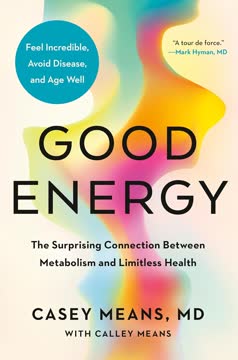
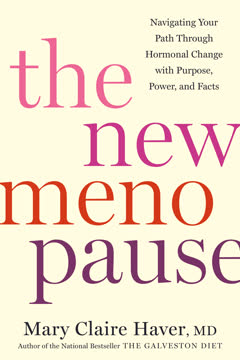
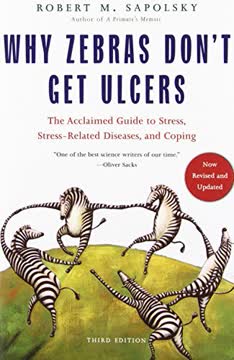
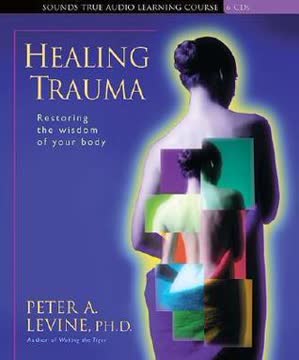
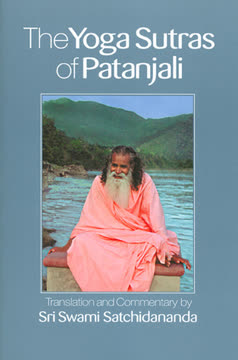
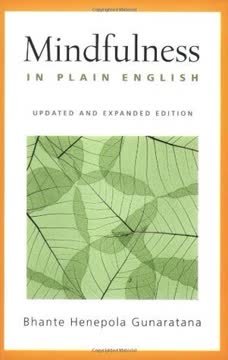
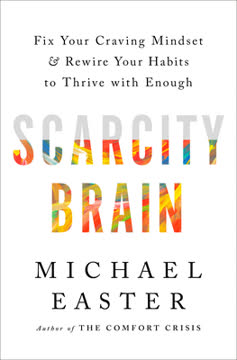
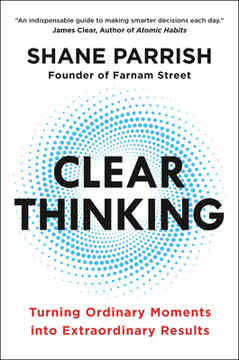
Download PDF
Download EPUB
.epub digital book format is ideal for reading ebooks on phones, tablets, and e-readers.
